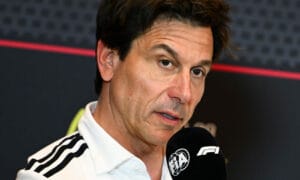In 1952, Zandvoort made its debut on the official Grand Prix calendar. Immediately, two Dutch drivers graced the starting line: the ambitious car racer Dries van der Lof and jet pilot Jan Flinterman. They were the first Dutch F1 drivers in history. This is a reconstruction of their debut in the dunes of North Holland.
To make the Grand Prix a commercial success, Herman van Haaren, sports commissioner of the KNAC (Royal Dutch Automobile Club), understood that something extra was needed: a Dutch driver. Or rather two. He had two Dutch drivers in mind: Maus Gatsonides, the inventor/car racer who had already participated in various international rallies and was the winner of the Monte Carlo rally in 1950, and Dries van der Lof, who had already won a few victories in the national sports car races at Zandvoort. However, in the run-up to the weekend, Gatsonides fell ill. Jet pilot and speed demon Jan Flinterman was his replacement.
Speed Demon and Jet Pilot
Dries van der Lof, born in 1919, was a true car racer. At 17, he was already driving a patched-up Bugatti over the garden paths of his parents’ house, which he had widened himself. In February 1952, he told De Telegraaf how it all started: “That Bugatti (85 hard guilders, finally saved up) was kind of a supernatural fulfillment of a fiery boyhood dream. The enthusiasm for everything motorized on four wheels was there, right from the school benches.”
Jan Flinterman, also born in 1919, was initially a motorcycle racer. Shortly after the capitulation in 1940, he fled to England to fly for the British RAF. From then on, he was primarily a pilot. He received several awards. After the war, he gained fame in the Netherlands with record flights in a Gloster Meteor jet. In between flying, he participated in six-day motorcycle races and occasionally drove a car race at Zandvoort. Speed was in his blood.



